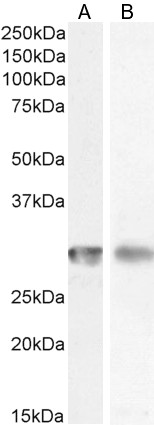Mouse anti Human CD4 FITC - CD28 PE
0428S
ApplicationsFlow Cytometry
Product group Antibodies
TargetCD4
Overview
- SupplierNordic-MUbio
- Product NameMouse anti Human CD4 FITC - CD28 PE
- Delivery Days Customer7
- Application Supplier NotePBMC: Add10 microl of MAB/10^6 PBMC in 100 microl PBS. Mix gently and incubate for 15 minutes at 2 to 8C. Wash twice with PBS and analyze or fix with 0.5% v/v of paraformaldehyde in PBS and analyze. WHOLE BLOOD: Add10 microl of MAB/100 microl of whole blood. Mix gently and incubate for 15 minutes at room temperature 20C. Lyse the whole blood. Wash once with PBS and analyze or fix with 0.5% v/v of paraformaldehyde in PBS and analyze. See instrument manufacturers instructions for Lysed Whole Blood and Immunofluorescence analysis with a flow cytometer or microscope.
- ApplicationsFlow Cytometry
- Applications SupplierFlow Cytometry
- CertificationResearch Use Only
- ConjugateFITC, RPE
- Gene ID920
- Target nameCD4
- Target descriptionCD4 molecule
- Target synonymsCD4mut, IMD79, Leu-3, OKT4D, T4, T-cell surface glycoprotein CD4, CD4 antigen (p55), CD4 receptor, T-cell surface antigen T4/Leu-3
- HostMouse
- IsotypeIgG1
- Protein IDP01730
- Protein NameT-cell surface glycoprotein CD4
- Scientific DescriptionCD4 FITC - CD28 PE
- Shelf life instructionSee expiration date on vial
- Reactivity SupplierHuman
- Reactivity Supplier NoteCD4=Derived from the hybridization of mouse NS-1 myeloma cells with spleen cells from BALB/c mice immunized with human perherial blood T lymphocytes.CD28=Derived from the hybridization of mouse Sp2/O-Ag14 myeloma cells with spleen cells of BALB/c mice immunized with the HPB-ALL T-cell line.
- Storage Instruction2°C to 8°C
- UNSPSC12352203







